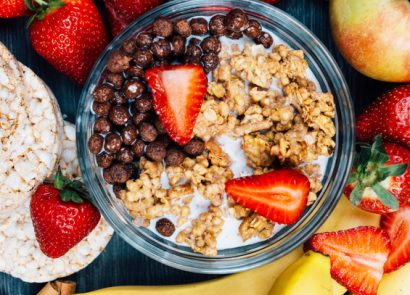How amazing is that feeling? You know the one we mean – when you’ve completed that uphill sprint in your spin class and your heart feels like it’s going to burst through your chest. You can’t catch your breath, your muscles are warm and tired and your face tickled by the salty beads of perspiration from your brow. Exhausting? Yes. Unattractive? Perhaps. Good for you? Absolutely.
According to the British Heart Foundation (bhf.org.uk), over half of women living in the UK don’t achieve the recommended levels of physical activity and with seven million people living with heart disease it’s more important than ever that we keep our tickers tocking.
Be still my beating heart
Pumping iron may sculpt our physiques and torch calories, but strengthening our organs may be a little trickier. “Your heart is a muscle just like any other and in order for it to become strong it must be worked,” says Dave Kyle, UK head trainer at Les Mills (lesmills.com). “Too many people become out of breath by performing simple exercises such as walking up the stairs because they aren’t working their heart muscle enough. As a result, it will become weaker over time, which can cause a variety of health problems. Cardio training is vital to get the heart pumping at a faster rate and (when performed on a regular basis) keep it fit and healthy. Research has shown that excess weight can lead to a significant strain on the heart therefore make sure you pack cardio into your exercise regimes to increase your metabolic rate, making weight loss more achievable,” Dave tells us.
Raise the bar
Sounds simple enough. But if you shudder at the thought of spending hours slogging it out on the treadmill, there’s no need to pack away your trainers just yet. High-intensity cardio prompts your muscles to develop more mitochondria, tiny energy-making units within cells that use sugar and fat for fuel. The more mitochondria you have, the better your muscles become at utilising carbohydrates, improving the body’s insulin sensitivity. The result: less sugar floats around in your blood, and this lowers the risk of type 2 diabetes, a major precursor to heart disease. “All exercise is great and will only have a positive impact on your heart health so find something that you enjoy,” Dave suggests.
“There is a range of classes and workouts that can deliver a great cardio workout so don’t think you have to be tied to the elliptical machine. The best way to keep your heart strong is to perform short, intense bursts of moves that quickly get your pulse up instead of keeping it at a steady pace for an hour. This can include sprinting for one minute and resting for 30 seconds, or if running isn’t your bag, the same can be applied to cycling or plyometric moves at home. By working close to your maximum output you develop your lungs, heart and muscles faster and more efficiently.” We’re kitted up and raring to go but there’s something all cardio converts need to consider: “Cardio is the one thing you don’t want to overdo when you first start training. Once you can train for 30-45 minutes, three to five times a week, look to raise the bar and work on more advanced training, increasing the intensity of your workout rather than the volume.” Although pushing your heart to the limit may seem risky, research has shown that high-intensity exercise may give you a greater reduction in blood pressure. When you pick up the pace, artery walls produce nitric oxide, which boosts their ability to dilate so blood flows more easily. Intimidated? Take it easy and the more results you see, the more determination you’ll find to push further beyond your comfort zone – and your heart will thank you for it.
Hiit it heart
Give your ticker the training it deserves with dave’s fast and furious workout plan
Perform an accelerated warm up (two minutes with any selection of the exercises in the workout) then: 5 x circuits of the following with 1 minute rest between each set:
- 45 seconds of squat burpees, 15 seconds recovery
- One minute of high knees, 30 seconds recovery
- 45 seconds of push ups (knees or toes) 15 seconds recovery
- One minute of plyometric lunges, 30 seconds recovery
- 45 seconds of mountain climbers






















